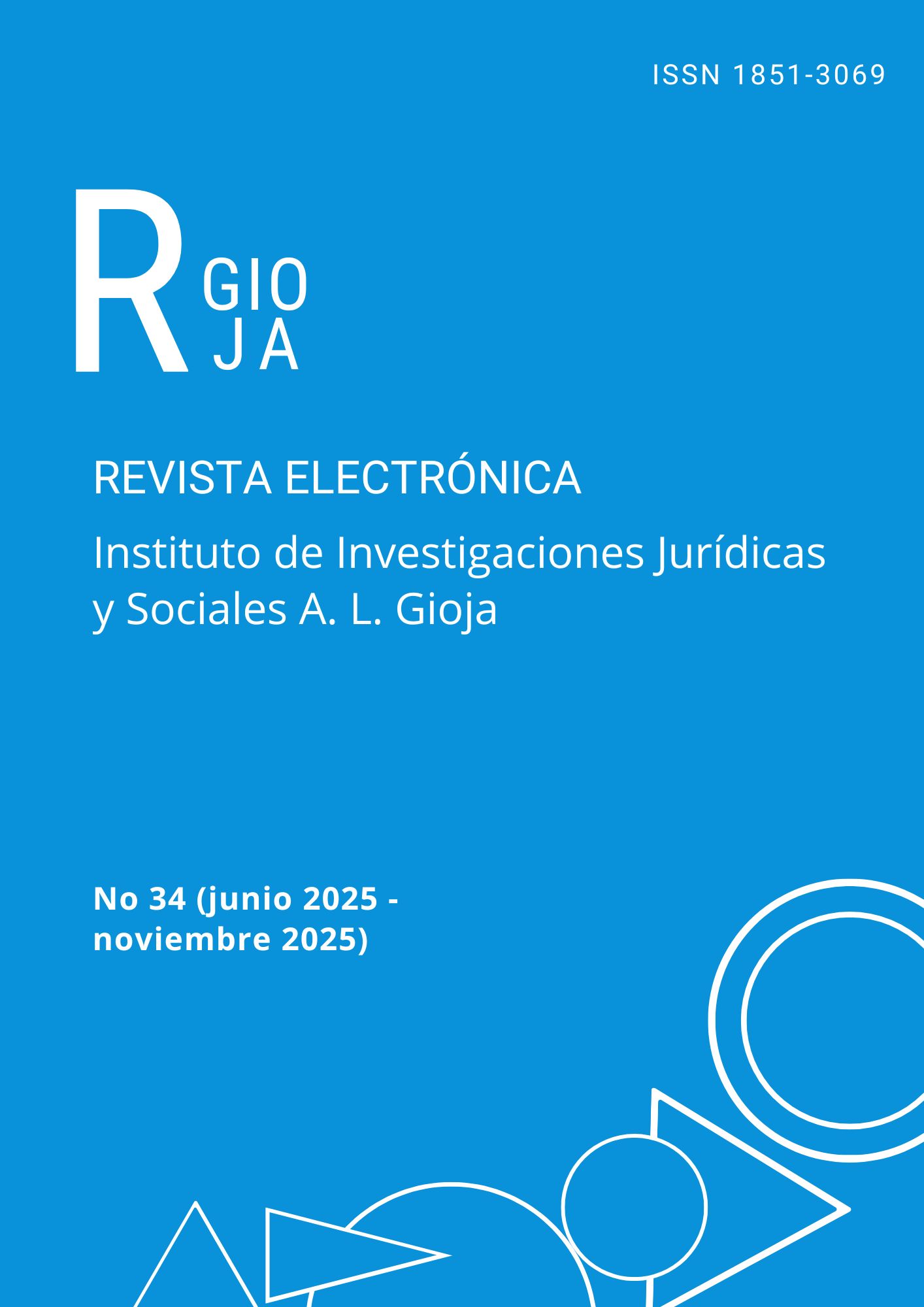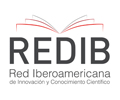International responsibility of the State for cyber-attacks: the principles of sovereignty and non-intervention
DOI:
https://doi.org/10.62169/rg.i34.2449Keywords:
CYBEROPERATIONS, SOVEREIGNTY, INTERVENTION, INTERNATIONALLY, WRONGFULL ACTSAbstract
Cyber security concerns all areas of State regulation: protection of personal data or sensitive information, control of private or public infrastructure, information operations, operation of computer systems and application of technology in general. Most cyber operations do not manifest physical consequences, so they do not strictly constitute a "use of force" prohibited under international law. This paper will firstly analyze the illegality of cyber operations as behaviors contrary to the principles of sovereignty and non-intervention and, secondly, the attribution criteria given the complications involved in identifying and prosecuting those who carry out these acts.
Downloads
References
BANKS, Williams (2021). “Cyber Attribution and State Responsibility”. Stockton Center for International Law, 97, pp. 1039-1072.
BUCHAN, Russell, NICHOLAS, Tsagourias (2017). “The Crisis in Crimea and the Principle of Non- Intervention”. International Community Law Review, 19(2/3), pp. 165-193.
CHIRCOP, Luke (2019). “Territorial Sovereignty in Cyberspace After Tallinn Manual 2.0”. Melbourne Journal of International Law, 20(2), pp. 349-377.
CLARK, David D., LANDAU, Susan (2011). “Untangling Attribution”. Harvard National Security Journal, 2(2), pp. 1-45.
CRAWFORD, James. (2019). Brownlie's principles of public international law. (9a ed.). Oxford.
CRAWFORD, James. (2013). State responsibility : The general part. Cambridge University Press.
DE FALCO, Marco. (2012). Stuxnet Facts Report: A Technical and Strategic Analysis. Tallinn: NATO Cooperative Cyber Defence Centre of Excellence.
DELBERT, Tran (2018). “The Law of Attribution: Rules for Attributing the Source of a Cyber-Attack”. Yale Journal of Law and Technology, 20, pp. 376-441.
DELERUE, François (2019). “Attribution to State of Cyber Operations Conducted by Non-State Actors”. En CARPANELLI, Elena, LAZZERINI, Nicole (eds). Use and Misuse of New Technologies (pp. 233-255). Springer Cham.
DELERUE, François (2020a). “Circumstances Precluding or Attenuating the Wrongfulness of Unlawful Cyber Operations”. En: Cyber Operations and International Law (Cambridge Studies in International and Comparative Law, pp. 343-352). Cambridge University Press.
DELERUE, François (2020b). “Internationally Wrongful Cyber Acts: Cyber Operations Breaching Norms of International Law. En: Cyber Operations and International Law (Cambridge Studies in International and Comparative Law, pp. 193-272). Cambridge University Press.
DELERUE, François (2020c). “The Threshold of Cyber Warfare: From Use of Cyber Force to Cyber Armed Attack”. En: Cyber Operations and International Law (Cambridge Studies in International and Comparative Law, pp. 273-342). Cambridge University Press.
FRASER, Angus (2016). “Territorial Sovereignty in the Cyber Age”. Pandora’s Box, 23, pp. 165-174.
HAATAJA, Samuli (2017). “The 2007 Cyber Attacks against Estonia and International Law on the Use of Force: An Informational Approach”. Law, Innovation & Technology, 9(2), pp. 159-189.
HATHAWAY, Oona A. et al. (2012a). “Ensuring Responsibility: Common Article 1 and State Responsibility for Non- State Actors”. Texas Law Review, 100(4), pp. 539-590.
HATHAWAY, Oona A. et al. (2012b). “The Law of Cyber-Attack”. California Law Review, 100(4), pp. 817-885.
HELAL, Mohamed S. (2019). “On Coercion in International Law”. New York University Journal of International Law and Politics, 52(1), pp. 1-122.
ILC (2001), “Draft articles on Responsibility of States for Internationally Wrongful Acts, with commentaries”. Yearbook of the International Law Commission, vol. II(2), pp. 31-143.
KOSIK, Andrey L. (2015). “The Concept of Sovereignty as a Foundation for Determining the Legality of the Conduct of States in Cyberspace”. Baltic Yearbook of International Law Online, 14, pp. 93-103.
LEVITE, Ariel et al. (2022). Managing U.S.-China Tensions Over Public Cyber Attribution. Carnegie Endowment for International Peace.
LIPSON, Howard F. (2002). Tracking and Tracing Cyber-Attacks: Technical Challenges and Global Policy Issues. Carnegie Mellon University, CERT Coordination Center.
MAČÁK, Kubo (2016). “Decoding Article 8 of the International Law Commission’s Articles on State Responsibility: Attribution of Cyber Operations by Non-State Actors”. Journal of Conflict & Security Law, 21(3), pp. 405-428.
Manual de Tallin 2.0 sobre el Derecho Internacional Aplicable a las Operaciones Cibernéticas (2017). Grupos Internacionales de Expertos por Invitación del Centro de Excelencia de Ciberdefensa Cooperativa de la OTAN. Cambridge University Press.
MARGULIES, Peter (2013). “Sovereignty and Cyber Attacks: Technology’s Challenge to the Law of State Responsibility”. Melbourne Journal of International Law, 14(2), pp. 496-519.
MIRÓ LINARES, Fernando. (2012). El cibercrimen: fenomenología y criminología de la delincuencia en el ciberespacio. Marcial Pons Ediciones Jurídicas y Sociales.
MOORE, Andrew (2015). “Stuxnet and Article 2(4)’S Prohibition against the Use of Force: Customary Law and Potential Models”. Naval Law Review, 64, pp.1-27.
MOULIN, Thibault (2020). “Reviving the Principle of Non-Intervention in Cyberspace: The Path Forward”. Journal of Conflict & Security Law, 25(3), pp. 423-447.
MOYNIHAN, Harriet (2019). The Application of International Law to State Cyberattacks Sovereignty and Non-intervention. Chatham House.
OTAN (2021, 19 de julio). Statement by the North Atlantic Council in solidarity with those affected by recent malicious cyber activities including the Microsoft Exchange Server compromise [Comunicado de prensa].
PAYNE, Christian, FINLAY, Lorraine (2017). “Addressing Obstacles to Cyber-Attribution: A Model Based on State Response to Cyber-Attack”. George Washington International Law Review, 49(3), pp. 535-568.
PIGGIN, Richard (2010). “The Reality of Cyber Terrorism”. Engineering & Technology, 5(17), pp. 36-38.
SCHMITT, Michael N. (2014). “‘Below The Threshold’ Cyber Operations: The Countermeasures Response Option and International Law”. Virginia Journal of International Law, 54(3), pp. 698-732.
SCHMITT, Michael N., VIHUL, Liis (2017). “Respect for Sovereignty in Cyberspace”. Texas Law Review, 95(7), pp. 1639–1670.
SHACKELFORD, Scott J. (2010). “State Responsibility for Cyber Attacks: Competing Standards for a Growing Problem”. Georgetown Journal of International Law, 42, pp. 197-208.
SKINNER, Christina Parajon (2014). “An International Law Response to Economic Cyber Espionage”. Connecticut Law Review, 46(6), pp. 1165-1207.
STOKES, Paul (2014). State Responsibility for Cyber Operations: International Law Issues Event Report. British Institute of International and Comparative Law.
TANYILDIZI, M. Emrah (2017). “State Responsibility in Cyberspace: The Problem of Attribution of Cyberattacks Conducted by Non-State Actors”. Law & Justice Review, 8(14), pp. 119-176.
U.S. DEPARTMENT OF STATE (2022, 10 de mayo). Attribution of Russia’s Malicious Cyber Activity Against Ukraine [Comunicado de prensa].
UYHENG, Joshua, CRUICKSHANK, Iain J. y CARLEY, Kathleen M. (2022) “Mapping state-sponsored information operations with multi-view modularity clustering”. EPJ Data Sci. 11(25).
VAN BENTHEM, Tsvetelina, DIAS, Talita, y HOLLIS, Duncan B. (2022). “Information Operations under International Law”. Vanderbilt Journal of Transnational Law, 55(5), pp. 1217-1286.
WATTS, Sean (2015). “Low-Intensity Cyber Operations and the Principle of Non-Intervention”. En OHLIN, Jens David, GOVERN, Kevin, FINKELSTEIN, Claire (eds). Cyber War: Law and Ethics for Virtual Conflicts (pp. 249-270). Oxford.
WATTS, Sean, THEODORE, Richard (2018). “Baseline Territorial Sovereignty and Cyberspace”. Lewis & Clark Law Review, 22(3), pp. 771-840.
Casos y resoluciones:
Actividades Militares y Paramilitares (Nicaragua v. Estados Unidos de América), 1986, Corte Internacional de Justicia, 27 de junio de 1986.
Ciertas Actividades Realizadas por Nicaragua en la Zona Fronteriza, (Costa Rica v. Nicaragua), 2018, Corte Internacional de Justicia, 18 de febrero de 2018.
Conformidad con el derecho internacional de la declaración unilateral de independencia de Kosovo, Opinión Consultiva del 22 de julio de 2010, Corte Internacional de Justicia, I.C.J. Reports, 2010.
Corfu Channel (Reino Unido de Gran Bretaña e Irlanda del Norte v. Albania), 1949, Corte Internacional de Justicia, 9 de abril de 1949.
Fiscal v. Tadić, 1997, Tribunal Internacional Penal para la Antigua Yugoslavia, 7 de mayo de 1997.
Fiscal v. Tadić, 1999, Cámara de Apelaciones del Tribunal Internacional Penal para la Antigua Yugoslavia, 15 de julio de 1999.
Legalidad de la amenaza o el uso de armas nucleares, Opinión Consultiva del 8 de julio de 1996, Corte Internacional de Justicia, I.C.J. Reports, 1996.
Lotus (Francia v. Turquía), 1927, Corte Permanente de Justicia Internacional, 7 de septiembre de 1927.
Resolución 2625 (XXV), Declaración Relativa a los Principios de Derecho Internacional Referentes a las Relaciones de Amistad y a la Cooperación entre los Estados de Conformidad con la Carta de las Naciones Unidas, Asamblea General de las Naciones Unidas, del 24 de octubre de 1970.
Resolución A/RES/56/83, Responsabilidad del Estado por hechos internacionalmente ilícitos, Asamblea General de las Naciones Unidas.
Resolución A/RES/77/298, Estrategia Global de las Naciones Unidas contra el Terrorismo: octavo examen, Asamblea General de las Naciones Unidas, del 22 de junio de 2023.
Downloads
Published
Issue
Section
License
Copyright (c) 2025 Leticia Vita

This work is licensed under a Creative Commons Attribution-NonCommercial 4.0 International License.
Los/as autores/as que publican en esta revista están de acuerdo con los siguientes términos:
1. Los/as autores/as conservan los derechos de autor y garantizan a la revista el derecho de ser la primera publicación del trabajo al igual que licenciado bajo una Creative Commons Attribution-NonCommercial 4.0 International License que permite a otros compartir el trabajo con un reconocimiento de la autoría del trabajo y la publicación inicial en esta revista.
2. Los/as autores/as pueden establecer por separado acuerdos adicionales para la distribución no exclusiva de la versión de la obra publicada en la revista (por ejemplo, situarlo en un repositorio institucional o publicarlo en un libro), con un reconocimiento de su publicación inicial en esta revista.
3. Se permite y se anima a los/as autores/as a difundir sus trabajos electrónicamente (por ejemplo, en repositorios institucionales o en su propio sitio web) antes y durante el proceso de envío, ya que puede dar lugar a intercambios productivos, así como a una citación más temprana y mayor de los trabajos publicados (Véase The Effect of Open Access) (en inglés).














